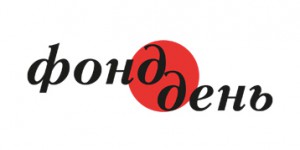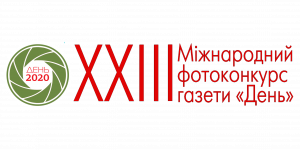Officials at the UN High Commissioner for Refugees predict that in 5 to 10 years Ukraine’s population will be ethnically considerably more diversified as a result of the influx of tens of thousands of migrants (no one can say exactly how many) from less developed countries, the former Soviet republics, as well as China, India, and Vietnam. This is actually a natural process; these people will fill a niche constantly being created because of the outflow of Ukrainians seeking jobs in EU countries. According to a study carried out by the Cross-Border Cooperation/Soderkoping Process (CBCP) Secretariat, a million more persons entered than exited Ukraine last year. Official statistics point to some 40 million foreigners crossing the Ukrainian border every year, one percent of whom are illegal migrants. Experts believe that a great advantage of this migration process will be a higher birth rate in Ukraine.
Ours is not a unique experience. Similar trends have appeared all over the world, particularly in Europe. Ilmars Mezs, Program officer, International Organization for Migration, says that all the new EU countries, except Romania, are experiencing a significant outflow of citizens, who are leaving for economic reasons - to find jobs in European countries with a higher standard of living, specifically in Great Britain and Ireland. Their places are taken by nationals of Ukraine, Moldova, Russia, and poor countries of the former USSR. Their places, in turn, are taken by citizens from even poorer countries in Central Asia. Ukrainians rank first among illegal migrants in Poland, but they comprise the smallest number of illegal migrants in Romania and Hungary.
Studying migration processes in Europe, IOM and CBCP experts published the results of their research on 2004-06 Migration Trends in Ukraine, Belarus, Moldova, and Newly Admitted EU Countries. Their findings show that Ukrainian border guards annually detect up to 15,000 foreigners illegally crossing the Ukrainian border in search of a better life. Half of these are illegals from Russia, and the rest are from Azerbaijan, Moldova, Uzbekistan, Georgia, Armenia, China, India, and Vietnam.
Experts believe that migration trends in Ukraine have received a considerable impetus over the past several years, and as a result Ukraine is changing from a migration-supplying to receiving country. According to Bernhard Bogensperger, attache at the European Commission’s Representation in Ukraine and Belarus, a migration balance will be achieved only when Ukrainians are allowed to freely move to EU countries. This will be facilitated when Ukraine joins the Soderkoping Process, which is aimed at maintaining cooperation with countries located in the vicinity of the EU’s eastern border. The program includes assistance to migrants and measures to improve their stay in receiving countries.
Bogensperger said they are glad that the Ukrainian government has adopted a target-oriented program until 2015, which is aimed at improving border guard facilities and checkpoint service. Its budget amounts to one billion euros. In an effort to help resolve these problems, the European Union has already allocated 2.3 million euros to be transferred to Ukraine by the end of 2008. Arrangements have been made to simplify the visa regime between Ukraine and the EU.
All these measures are part of the Soderkoping Process whose objective is to work out a joint strategy for participating countries. The latest arrangements with Ukraine are very important, as they are intended to help Ukraine get closer to the EU. This is especially important for Ukraine in that it is the first step toward the unimpeded movement of its citizens abroad and the right to find legal jobs there. Legal migration actually means economic growth and progress, as the number of able-bodied youth is dramatically decreasing in EU countries.
Experts note that the creation of a “favorable checkpoint service” on Ukraine’s border involves a great deal of work. Swedish embassy official Bjorn Fagerberg told The Day that customs authorities play an important role. “The Ukraine-Moldova border is an example,” he said, “where the IMO mission has been working for two years and succeeded in enhancing customs control, making it more effective and reliable. Ideally, if a customs authority is functioning adequately, waiting lines are shorter and this has a positive effect on the economy of both countries, because idling trucks mean big financial losses.”
Among the tasks of the Soderkoping Process is work with refugees, who require social protection from the country that has involuntarily received them. Experts note that such work is poorly organized in Ukraine: at best four percent of refugees receive social protection from the government while their numbers are increasing with each passing year.
* * *
The Soderkoping Process was launched in May 2001 in response to the EU’s eastward expansion. Its objective is to help enhance asylum and migration cooperation between countries located along the future eastern border of the EU. The name comes from the Swedish city of Soderkoping, where the first meeting of officials representing the Belarusian, Lithuanian, Polish, and Ukrainian migration and customs authorities, the Swedish government, UN High Commissioner for Refugees, European Commission, and International Organization for Migration took place. In 2002, Hungary, Estonia, Romania, and Slovakia joined the process. Ten countries have now joined the Soderkoping Process.






